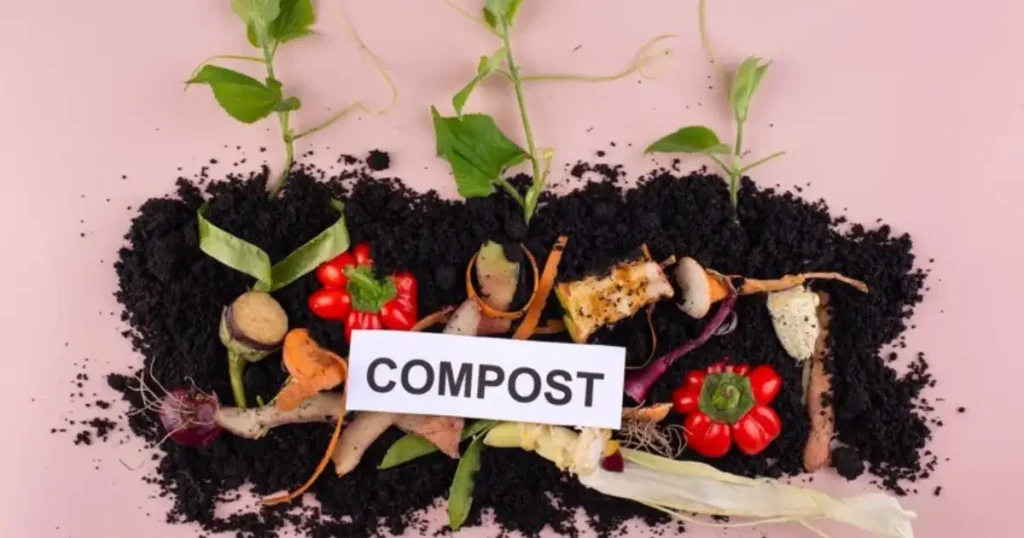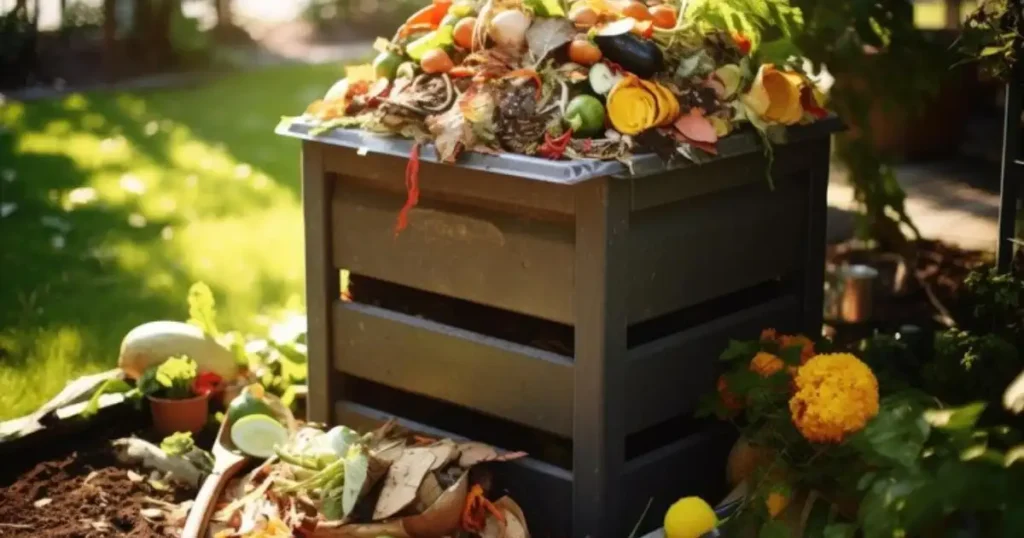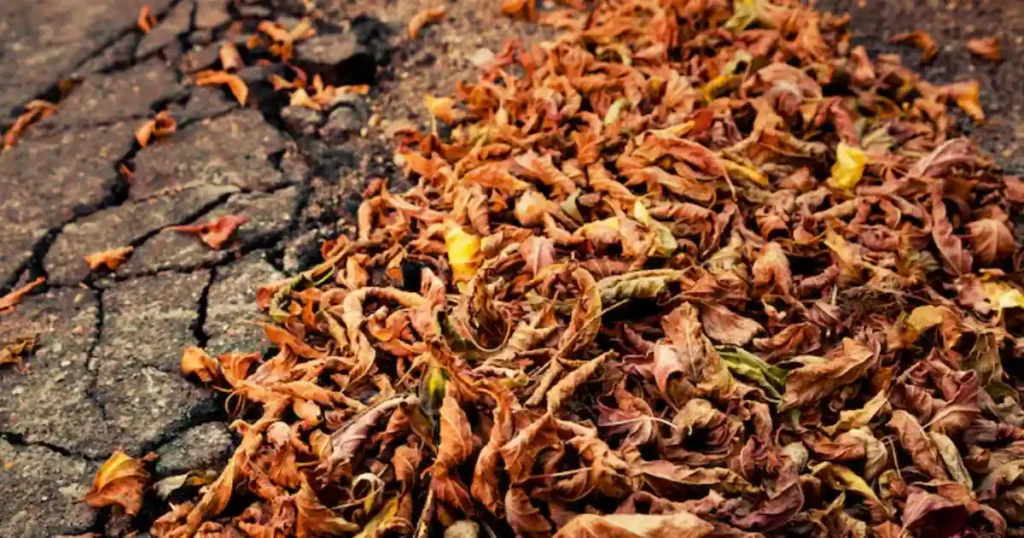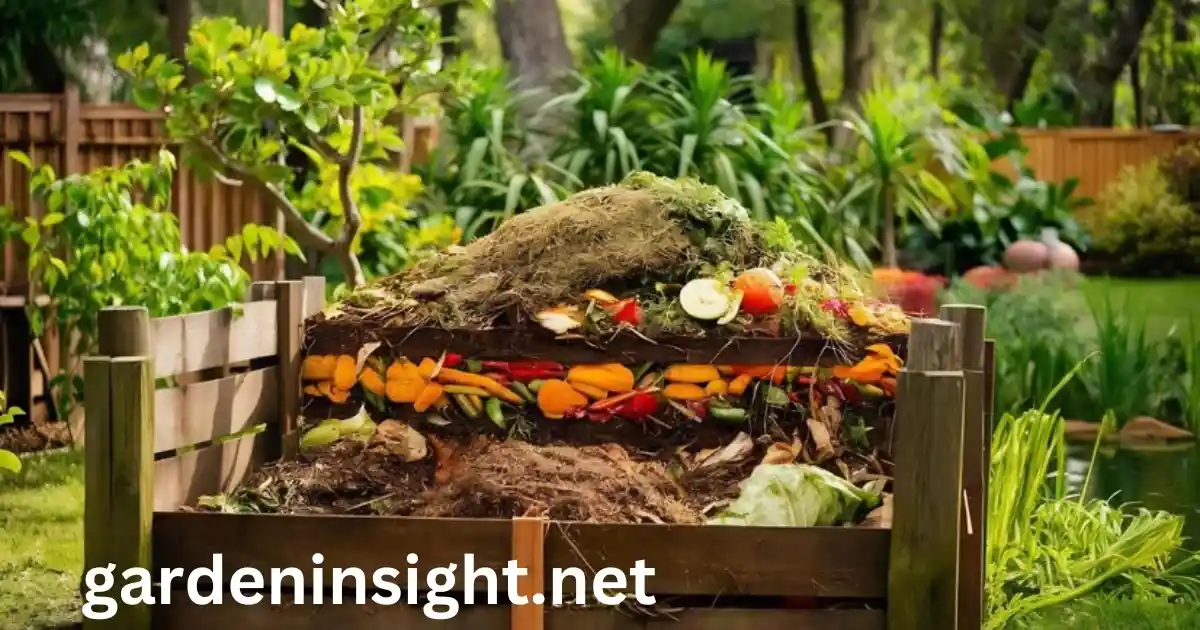Composting is a great way to turn your kitchen scraps and yard waste into a valuable fertilizer for your garden.
Composting at home for gardening is an effective and sustainable way to improve soil quality and reduce waste. With a few simple steps, you can create nutrient-rich compost to feed your plants and garden.
It’s easy to do, and it’s good for the environment. This guide will teach you everything you need to know about how to compost at home for gardening, even if you’re a beginner.
What is Composting?

Composting is like nature’s recycling system. It’s the process of breaking down organic matter, such as leaves, food scraps, and grass clippings, into a dark, crumbly material called compost. This “black gold” is full of nutrients that help your plants grow strong and healthy.
Why Compost at Home?
- Reduce waste: Composting keeps food scraps and yard waste out of landfills.
- Improve your soil: Compost adds nutrients and improves the structure of your soil, helping your plants thrive.
- Save money: You can make your own fertilizer for free!
- Help the environment: Composting reduces greenhouse gas emissions.
What Can You Compost?
Material best suited for composting is as follow:
Greens (Nitrogen-Rich Materials)
- Fruit and vegetable scraps
- Coffee grounds and filters
- Grass clippings
- Green leaves
Browns (Carbon-Rich Materials)
- Dried leaves
- Twigs and small branches
- Shredded paper and cardboard
- Sawdust
Choosing the Right Compost Bin

There are many different types of compost bins available, from simple DIY bins to more complex tumbling composters. Here are a few popular options:
| Compost Bin Type | Description | Pros | Cons |
|---|---|---|---|
| Pile | A simple pile of organic matter on the ground. | Easy and inexpensive. | Can attract pests and may not be aesthetically pleasing. |
| Bin | A container with holes for air circulation. | Keeps pests out and contains the compost. | Can be more expensive than a pile. |
| Tumbling Composter | A rotating bin that makes it easy to turn the compost. | Speeds up the composting process. | Can be more expensive than other options. |
How to Compost at Home Without a Bin
You can compost at home without a bin by creating a compost pile. Simply choose a level, well-drained spot in your yard and start layering your green and brown materials.
How to Compost at Home: A Step-by-Step Guide
- Choose a location: Select a spot that is level, well-drained, and easily accessible.
- Add your materials: Start with a layer of brown materials, then add a layer of green materials. Continue layering until the bin is full.
- Moisten the pile: The compost should be as moist as a wrung-out sponge.
- Turn the pile: Use a pitchfork or compost aerator to turn the pile every few weeks. This helps to introduce oxygen and speed up the composting process.
- Be patient: It can take anywhere from a few months to a year for your compost to be ready.
How to Make Mint Compost at Home for Plants
Mint is a great addition to your compost pile. It can help to deter pests and add beneficial nutrients to your compost. To make mint compost, simply add your mint clippings to your compost bin along with other green and brown materials.
How to Make Organic Fertilizer at Home for Plants
Compost is an excellent organic fertilizer for your plants. It’s packed with nutrients that help your plants grow strong and healthy. To use compost as fertilizer, simply spread it around the base of your plants or mix it into the soil.
How to Compost at Home for Beginners
Composting can seem daunting at first, but it’s actually quite simple. Here are a few tips for beginners:
- Start with a small bin.
- Use a mix of green and brown materials.
- Keep the pile moist.
- Turn the pile regularly.
- Be patient!
What are the Best Materials for Home Composting?
The best materials for home composting are a mix of green and brown materials. Green materials provide nitrogen, while brown materials provide carbon. Some good options include:
- Greens: fruit and vegetable scraps, coffee grounds, grass clippings
- Browns: dried leaves, twigs, shredded paper
What is the Ideal Balance of Green and Brown Materials?

Green materials provide nitrogen, while brown materials provide carbon. For effective composting, aim for a balance of 2:1 browns to greens. Browns provide carbon, while greens supply nitrogen.
| Material Type | Examples | Function |
|---|---|---|
| Green | Fruit scraps, grass clippings | Provides nitrogen |
| Brown | Dry leaves, cardboard, sawdust | Provides carbon |
What is the Fastest Way to Compost at Home?
The fastest way to compost at home is to use a tumbling composter. Tumbling composters make it easy to turn the compost, which helps to speed up the process. You can also speed up composting by:
- Shredding your materials into smaller pieces.
- Keeping the pile moist.
- Turning the pile regularly.
What Can I Compost at Home for My Plants?
You can compost a wide variety of materials for your plants, including:
- Fruit and vegetable scraps
- Coffee grounds and filters
- Eggshells
- Yard waste
How Long Does it Take to Create Compost at Home?
The time it takes to create compost at home depends on a number of factors, including the type of bin you use, the materials you compost, and the climate you live in. It can take anywhere from a few months to a year for your compost to be ready.
Can I Compost Indoors, and How Do I Start?
Yes, you can compost indoors using a worm composting bin. Worm composting is a great option for people who live in apartments or have limited outdoor space.
How Do I Know When My Compost is Ready to Use?
Your compost is ready to use when it is dark brown and crumbly, with an earthy smell. It should not be recognizable as any of the original materials.
How to Compost in Small Spaces

Composting in limited spaces is possible with compact options like small compost bins or worm composting bins, which efficiently process organic waste into nutrient-rich soil amendment.
These methods offer a sustainable solution for reducing waste and enriching gardens, even in small areas.
Environmental Benefits of Composting at Home
Making compost at home has many environmental benefits, including:
- Reducing waste sent to landfills
- Reducing greenhouse gas emissions
- Improving soil health
Troubleshooting Compost: Common Problems and Solutions
Some common mistakes to avoid when composting at home include:
- Adding the wrong materials (e.g., meat, dairy, oils)
- Not turning the pile often enough
- Letting the pile get too dry or too wet
Problem: My compost is too wet. Solution: Add more brown materials to the pile.
Problem: My compost is too dry. Solution: Add water to the pile.
Problem: My compost smells bad. Solution: Turn the pile more often and make sure you have a good balance of green and brown materials.
| Problem | Cause | Solution |
|---|---|---|
| Foul smell | Excess greens or wet pile | Add more browns; turn the pile |
| Slow decomposition | Lack of air or moisture | Turn pile; add water if dry |
| Attracting pests | Meat/dairy in pile | Remove non-compostables |
How Does Compost Improve Soil Health for Plants?
Compost improves soil health for plants by:
- Adding nutrients
- Improving drainage
- Increasing water retention
- Promoting beneficial microbial activity
Conclusion
Composting at home is a rewarding way to reduce waste, improve your garden, and contribute to a healthier environment. Home composting for gardening is a practical, eco-friendly method to enhance soil and reduce waste.
By understanding the basics of composting, selecting suitable materials, and maintaining the process, you can create nutrient-rich compost that supports plant growth. Start small, monitor your pile, and enjoy the rewards of a healthier garden.
By following the simple steps outlined in this guide, you can easily create nutrient-rich compost that will help your plants thrive. Start composting today and experience the benefits for yourself!
FAQs
Some of the frequently inquired questions about home composting for your garden are:
How do I start composting at home with limited space?
Consider worm composting (vermicomposting) as it’s perfect for indoors and small spaces. You can also use a small compost bin or try bokashi composting, which ferments food waste in an airtight container.
What are the benefits of composting for my garden?
It enriches the soil with essential nutrients, improves drainage and water retention, and promotes healthy plant growth. Plus, it reduces the need for chemical fertilizers!
Can I compost all types of food scraps?
While many food scraps are compostable, avoid adding meat, dairy, oily foods, and cooked rice to your compost bin. These items can attract pests and create unpleasant odors.
How often should I turn my compost pile?
Turning your compost pile helps aerate it and speeds up the decomposition process. Aim to turn it every 1-2 weeks, or more frequently if you notice any unpleasant smells.
Is it necessary to use a compost activator?
Compost activators can help speed up the composting process, but they’re not always necessary. A good mix of green and brown materials, proper moisture, and regular turning are usually sufficient for successful composting.
